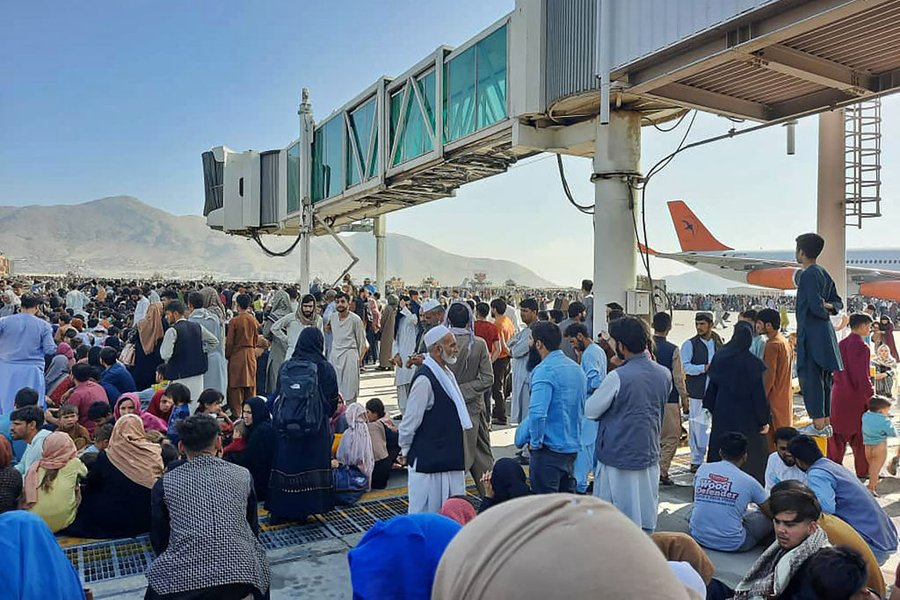
The Afghan Crisis: I
 By Venkatesh Raghavan
By Venkatesh Raghavan
The images of desperate Afghan families trying to get the hell out of Kabul airport even at the cost of risking their lives by hanging on to the wings or climbing on the top of aircraft that take off the tarmac have triggered a host of acerbic reactions both globally and from local migrants harbouring for a safe haven. First, locally, the situation calls for a high alert.

In wake of the Taliban camp having upped the ante on the US backed government forces, the situation has caused grave concern for Afghanistan’s immediate neighbours that share land borders with the country. Governments of both Iran in the west and Pakistan towards Afghanistan’s east are acutely aware of how the refugee crisis can end up in a total mess for their respective countries.
Also read:
- UN Security Council says Taliban should not support terrorists
- China accords legitimacy to Taliban while Afghans continue to flee Kabul
- US bites the dust as Taliban takes control of Afghanistan
Internationally too, the situation looks grim as the Western powers that might be faced with pressure on moral grounds to protect the lives of locals who fought the Taliban forces under their aegis may not be able to absorb such a high volume of refugees.
The crisis is much deeper than what seems to be immediately bothering the neighbouring nations and also the West, that of evacuating their staff, nationals and envoys from Kabul at the earliest. While this mass exodus is bound to plague countries across the globe including India, the bigger problem that will play out in the long run is about how the financially ill-equipped locals of Afghanistan, who are already suffering from malnutrition and almost forced starvation, seeking refugee status to escape from their homes, will get handled on a global scale.
The precipitating crisis too, cannot be ignored as in instances of teething problems. It is a known fact that with the Taliban in control, there is no guarantee of any safety, be it about occupations or human lives. India has a bitter memory to harbour on this count from two decades ago, when a civilian flight got hijacked to Kandahar and the then government was forced to part with the custody of a dreaded terrorist from across our border in exchange for the safety of the passengers and crew of the aircraft.
While this instance is still etched in the memories of global communities, their fears get compounded from the then emanating media reports on how the Taliban behaved with non-Muslim residents besides women and children that comprise weaker section of the Afghan society. In short, fear has stricken not only the embassy staff from different nations, but also workers and professionals who were hired from other nations to “build Afghanistan” and the locals as well.
Right now the global crisis that can be contemplated on having to absorb such a high quantum of refugees has already turned the heat on Afghan’s immediate neighbours, Pakistan and Iran. A UN agency that monitors refugee numbers disclosed that Pakistan is already harbouring upward of 1.4 million Afghans. Besides, Afghan’s western neighbour Iran has absorbed nearly 1 million refugees. The unofficial figures are expected to be much higher in both the countries. India too has a high volume of Afghan refugees housed in the National Capital Region. With countries in the Asian zone getting saturated on the refugee count, the poor and malnourished locals can only turn towards the West to alleviate their plight.





